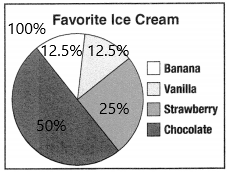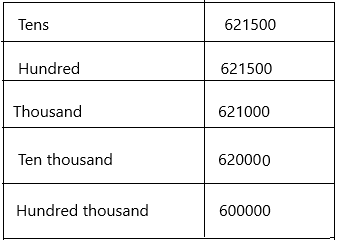By accessing our 180 Days of Math for Fifth Grade Answers Key Day 146 regularly, students can get better problem-solving skills.
180 Days of Math for Fifth Grade Answers Key Day 146
Directions: Solve each problem.
Question 1.

Answer:
Subtraction is one of the four basic arithmetic operations in mathematics. We can observe the applications of subtraction in our everyday life in different situations. For example, when we purchase fruits and vegetables for a certain amount of money say Rs. 200 and we have been given Rs. 500 note to the vendor. Now, the vendor returns the excess amount by performing subtraction such as 500 – 200 = 300. Then, the vendor will return Rs. 300.
Now we need to calculate the above-given question:

148 = Minuend; 37 = Subtrahend; 111 = Difference
Therefore, the answer is 111.
Question 2.
List the first 4 multiples of 5.
Answer:
The multiples of 5 are the numbers that are generated when 5 is multiplied by any natural number. That means any number that can be expressed in the form of 5n where n is an integer is a multiple of 5. As we know, if two values, p and q, are there, we say that q is a multiple of p if q = np for some integer n.
– All numbers which can be divided or are a product of 5 are multiples of 5.
– As per the definition given above, the multiple of 5 is a number obtained by multiplying some integer with 5.
The first five multiples if 5 are:
5 × 1 = 5
5 × 2 = 10
5 × 3 = 15
5 × 4 = 20
5 × 5 = 25.
Question 3.
791 ÷ 4 = __________
Answer:
– The division is breaking a number into an equal number of parts. The division is an arithmetic operation used in Maths. It splits a given number of items into different groups.
– There are a number of signs that people may use to indicate division. The most common one is ÷, but the backslash / and a horizontal line (-) are also used in the form of Fraction, where a Numerator is written on the top and a Denominator on the bottom.
The division formula is:
Dividend ÷ Divisor = Quotient.
Where,
A dividend is a number to be divided
The divisor is the number to be divided with
The quotient is the result to be found after the division.

The quotient is 197.75; the remainder is 0.
Question 4.
What is the number before 13,301?
Answer: 13,300
Before means, we have to write the lesser number.
13,295; 13,296; 13,297; 13,298; 13,299; 13,300; 13,301 and so on…
Question 5.
Write the mixed number for \(\frac{8}{3}\).
Answer:
\(\frac{8}{3}\) can be written as 8/3.
Step 1: Find the whole number
Calculate how many times the denominator goes into the numerator. To do that, divide 8 by 3 and keep only what is to the left of the decimal point:
8/3 = 2.6667=2
Step 2: Find a new numerator
Multiply the answer from Step 1 by the denominator and deduct that from the original numerator.
8-(3 x 2) = 8-6=2
Step 3: Get solution
Keep the original denominator and use the answers from Step 1 and Step 2 to get the answer. 8/3 as a mixed number is: 2 2/3
Question 6.
9 × 9 + 80 – 40 = _________
Answer:
The value of 9 × 9 is 81
The value of 80 – 40 is 40
Now add the values we got. Assume the answer is X.
X = 81 – 40
X = 41.
Therefore, the value of the above expression is 41.
Question 7.
![]() ÷ 8 = 4
÷ 8 = 4
Answer:
Let the empty box be X
X ÷ 8 = 4
Take 8 into the right-hand side then the equation will be:
X = 4 × 8
X = 32
Now put X value in the above-given expression.
X ÷ 8 = 4
32 ÷ 8 = 4
4 = 4
Hence, answer is proved.
Question 8.
What is the elapsed time from 9:45 A.M. to 11:16 A.M.?
Answer:
– Calculating the elapsed time means finding the difference between two times.
– To calculate the elapsed time, it is easiest to count up in hours.
– First, find the number of minutes from the earliest time to the next hour by subtracting the number of minutes in the earliest time from 60.
– Count up in hours until the hour before the final time.
– Then read the number of minutes from this hour until the final time.

– The elapsed time is 1 hour 31 minutes.
Question 9.
Are there any perpendicular lines in the letter A?
Answer:
Properties of perpendicular lines:
– Perpendicular lines always intersect at 90°.
– All perpendicular lines can be termed as intersecting lines, but all intersecting lines cannot be called perpendicular because they need to intersect at right angles.
According to the properties of perpendicular lines:
False, the letter A does not have a set of perpendicular lines because the intersecting lines do not meet each other at right angles.
Question 10.
What percentage of the people chose vanilla ice cream as their favourite?

Answer:
Assume the total percentage of the circle is 100%
The circle is divided into 4 sections.
Half of the circle that means chocolate flavour is 50%
And now there is 50% remaining. In 50% of the circle, there are 3 sections.
Of that 50%, 25% is strawberry and the remaining are vanilla and banana.
12.5% is vanilla and the remaining 12.5% is banana.

Question 11.
You can choose 2 toppings for your toast. Your choices are the following: grape jam, butter, honey, and peanut butter. List all the possible combinations you can make.
Answer:
A combination is a mathematical technique that determines the number of possible arrangements in a collection of items where the order of the selection does not matter. In combinations, you can select the items in any order.
The total number of possibilities is 4
We can choose two toppings of our own.
The possibility of grape jam is 1/4
The possibility of butter is 1/4
The possibility of honey is 1/4
The possibility of peanut butter is 1/4.
Question 12.
Complete the chart by rounding the number 621,498 to the specified place.
| Ten | |
| Hundred | |
| Thousand | |
| Ten Thousand | |
| Hundred Thousand |
Answer:
When rounding numbers, you must first understand the term “rounding digit.” When working with whole numbers and rounding to the closest 10, the rounding digit is the second number from the right—or the 10’s place. When rounding to the nearest hundred, the third place from the right is the rounding digit—or the 100’s place.
– If the digit is 0, 1, 2, 3, or 4, do not change the rounding digit. All digits that are on the righthand side of the requested rounding digit become 0.
– If the digit is 5, 6, 7, 8, or 9, the rounding digit rounds up by one number. All digits that are on the righthand side of the requested rounding digit will become 0.

– The given number is 621498
The number at the ten thousand places is 2 which is less than 5. So, round down the value.
rounded value of 621498 is 600000. Therefore 621498 rounded to the nearest Hundred Thousands is 600000.
– The number at the thousands place is 1 which is less than 5. So, round down the value.
rounded value of 621498 is 620000. Therefore, 621498 rounded to the nearest Ten Thousand is 620000.
– The number at the hundreds place is 4 which is less than 5. So, round down the value.
rounded value of 621498 is 621000. Therefore, 621498 rounded to the nearest Thousands is 621000.
– The number at the tens place is 9 which is equal to or above 5. So, round up the value.
rounded value of 621498 is 621500. Therefore, 621498 rounded to the nearest Hundred is 621500.
– The number at the one’s place is 8 which is equal to or above 5. So, round up the value.
rounded value of 621498 is 621500. Therefore, 621498 rounded to the nearest Tens is 621500.